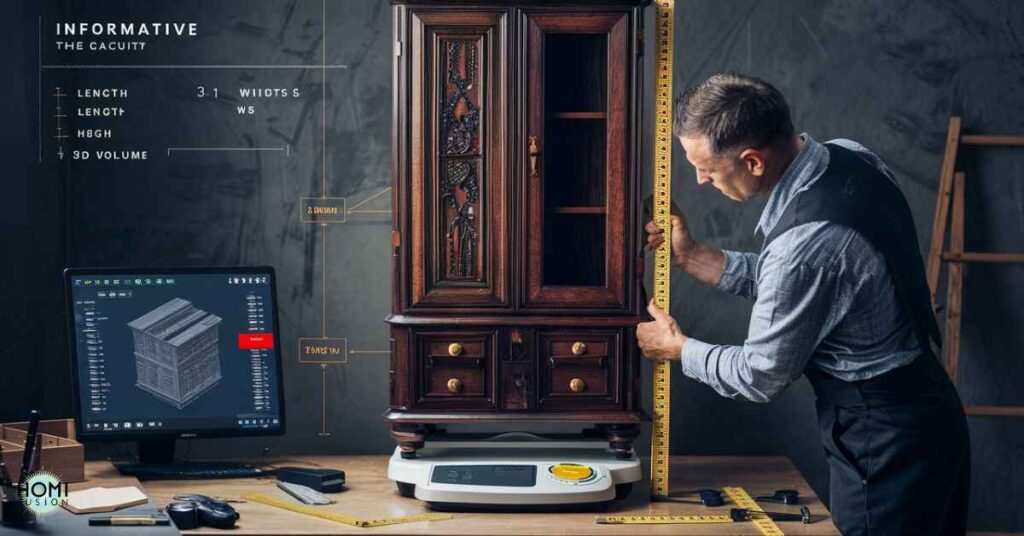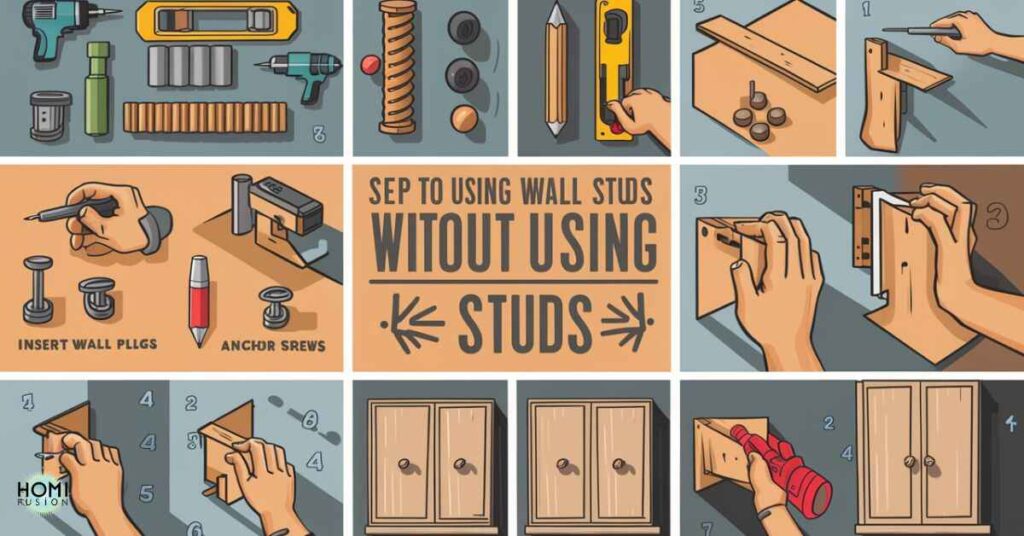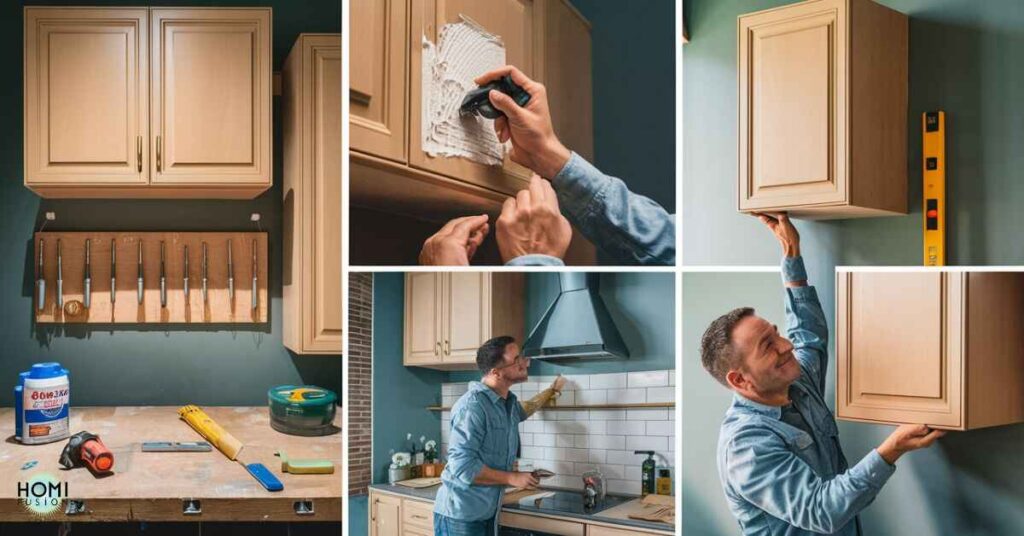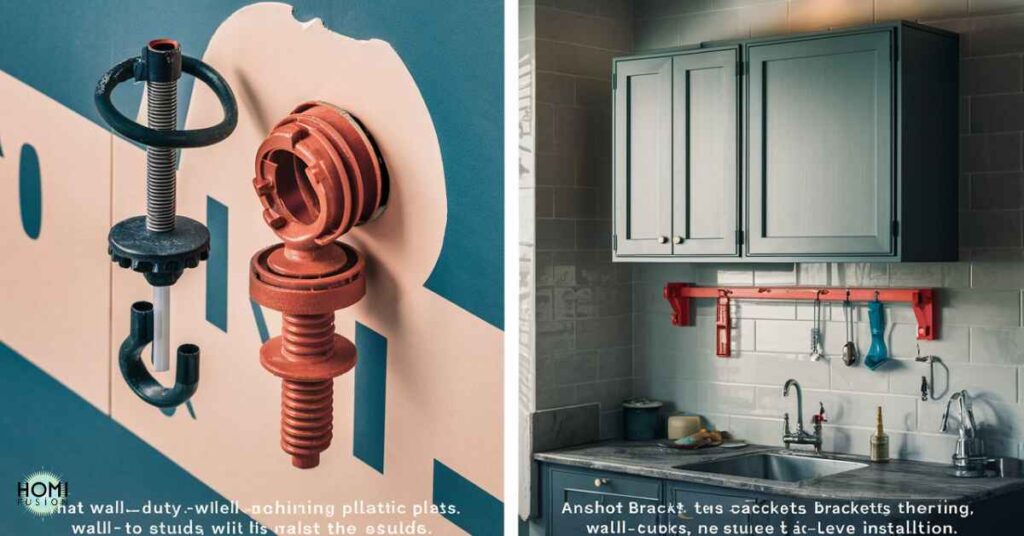Have you ever found yourself in a situation where you want to hang wall cabinets, but there are no studs available for secure mounting? It can be frustrating, especially when you’ve already picked out the perfect cabinets for your space. But fear not!
There are several alternative methods that allow you to install wall cabinets without relying on traditional stud support. In this comprehensive guide, we’ll explore these techniques step-by-step, ensuring your cabinets are safe, sturdy and looking fantastic.
When to Use Alternative Cabinet Mounting Methods
Wall studs are typically the go-to option for hanging cabinets because they provide solid support and can handle substantial weight. However, there are instances where studs may be unavailable or inaccessible, such as:
- Partition Walls: These non-load-bearing walls are often constructed without traditional stud framing, making it challenging to find studs for mounting.
- Remodeling Projects: When updating an existing space, you may encounter walls where the stud locations are obstructed. These studs might not be conveniently placed for your desired cabinet layout.
- Concrete or Brick Walls: In some homes or commercial spaces, you might be working with solid concrete or brick walls. In these cases, traditional stud mounting is not an option.
Using alternative mounting methods in these situations offers several benefits. Firstly, it allows for greater flexibility in cabinet placement, enabling you to optimize your space without being limited by stud locations.
Additionally, these techniques can help you avoid unnecessary damage to walls. They are ideal for rental properties or situations where you want to minimize wall alterations.
Assessing Your Wall and Cabinet Weight

Before diving into the installation process, it’s crucial to understand the composition of your walls. You should also know the approximate weight of the cabinets you’ll be hanging. These factors will guide you in selecting the appropriate mounting method and hardware.
Identifying Wall Material
Different wall materials require specific mounting techniques and hardware. Here are some common wall types and how to identify them:
- Drywall: A smooth, uniform surface with joints or seams visible. Drywall is often suitable for toggle bolts, anchors, or adhesive mounting.
- Plaster: An older wall material with a textured, uneven surface. Plaster walls may require specialized hardware or adhesive mounting.
- Concrete or Brick: Solid, dense walls that typically require concrete anchors or masonry screws for secure mounting.
To determine your wall’s composition, you can perform a visual inspection or a tap test. Drywall produces a hollow sound, while plaster is more solid. Alternatively, you can carefully remove a small section of baseboard or outlet cover for a closer look.
Calculating Cabinet Weight

Knowing the approximate weight of your cabinets is essential for selecting the appropriate mounting hardware and ensuring a safe installation. Here’s a general process to estimate cabinet weight:
- Measure Dimensions: Measure the height, width and depth of the cabinet in inches or centimeters.
- Calculate Volume: Multiply the height, width and depth to find the cabinet’s volume.
- Determine Material Density: Consult density charts or references to find the average density (weight per unit volume) of the cabinet’s construction material, such as wood or metal.
- Multiply Volume by Density: Once you have the cabinet’s volume and the material density, multiply them together to estimate the cabinet’s weight.
For example, if your cabinet measures 24″ x 36″ x 12″ (2 cubic feet) and is made of oak with a density of roughly 45 lbs/cubic foot, the estimated weight would be around 90 lbs (2 cubic feet x 45 lbs/cubic foot).
With a solid understanding of your wall composition and cabinet weight, you’ll be better equipped. This will help you choose the right mounting method and hardware for a secure, long-lasting installation.
Read this blog: How Many Hinges Per Cabinet Door?
Stud-Free Cabinet Installation Methods

Now that you’ve assessed the necessary factors, let’s dive into the various methods for installing wall cabinets without studs.
Using Toggle Bolts or Anchors
Toggle bolts and anchors are popular choices for mounting cabinets on drywall or plaster walls without studs. These hardware pieces expand behind the wall surface, providing a secure anchor point for your cabinets.
How Toggle Bolts Work:
- Drill a hole slightly larger than the toggle bolt diameter in the desired cabinet mounting location.
- Insert the toggle bolt through the hole, allowing the wings or straps to open up behind the wall.
- Tighten the bolt, which pulls the wings against the back of the wall, creating a sturdy anchor point.
- Attach the cabinet to the protruding bolt using the provided hardware.
Pros:
- Suitable for a wide range of cabinet weights and sizes
- Relatively easy installation process
- Can be used on drywall or plaster walls
- Provides a secure, long-lasting hold
Cons:
- Requires drilling holes in the wall
- May not be suitable for extremely heavy cabinets or certain wall materials
- Visible hardware on the cabinet front (can be concealed with trim or accessories)
The French Cleat System
The French cleat system is an ingenious and adjustable method for hanging cabinets without studs. It involves mounting interlocking wooden or metal cleats to the wall and cabinet, creating a secure and level hanging system.
How the French Cleat System Works:
- Attach one of the cleats (typically the longer piece) securely to the wall at the desired height, using appropriate hardware for your wall material.
- Securely attach the matching, shorter cleat to the back of the cabinet.
- Lift the cabinet and engage the cabinet’s cleat onto the wall cleat, allowing them to interlock.
- Make any necessary adjustments to ensure the cabinet is level and secure.
Pros:
- Highly adjustable and easy to level
- Distributes weight evenly along the wall
- Suitable for various wall materials with the right hardware
- Concealed hardware for a clean look
Cons:
- Requires precise measuring and cutting of the cleats
- May not be suitable for extremely heavy cabinets
- Visible cleat on the wall (can be concealed with trim or painted)
Heavy-Duty Construction Adhesive
For lightweight to moderately heavy cabinets, heavy-duty construction adhesive can be an effective and straightforward mounting solution, especially on drywall or plaster walls.
How to Mount Cabinets with Adhesive:

- Ensure the wall surface is clean, dry, and free of debris.
- Apply a generous amount of heavy-duty construction adhesive to the back edges of the cabinet, following the manufacturer’s instructions.
- Carefully position the cabinet against the wall and apply firm pressure to ensure proper adhesion.
- Use temporary bracing or support to hold the cabinet in place until the adhesive fully cures (consult the manufacturer’s recommended curing time).
Pros:
- No drilling or wall damage required
- Suitable for various wall materials
- Relatively simple installation process
- Concealed mounting for a clean look
Cons:
- Limited weight capacity (typically suitable for lighter cabinets)
- Permanent installation (difficult to remove or reposition cabinets)
- Requires a clean, flat wall surface for proper adhesion
- Curing time may delay cabinet use or installation of additional components
Comparing the Methods
To help you choose the most suitable method for your project, let’s compare the three stud-free cabinet installation techniques side-by-side:
| Method | Installation Difficulty | Weight Capacity | Cost | Adjustability | Visibility |
| Toggle Bolts/Anchors | Moderate | High | Low to Moderate | Limited | Hardware visible |
| French Cleat System | Moderate to High | Moderate to High | Moderate | High | Cleat may be visible |
| Construction Adhesive | Low | Low to Moderate | Low | None | Concealed |
As you can see, each method has its own set of pros and cons. For heavier cabinets or situations where adjustability is desired, toggle bolts or the French cleat system may be the better choices. If you’re working with lightweight cabinets and don’t mind a permanent installation, consider using construction adhesive. This method could be a cost-effective and straightforward option.
Ultimately, the best method for you will depend on factors such as the cabinet weight and wall material. It will also consider factors like desired adjustability and your personal preferences.
Tips for a Flawless Cabinet Installation
Regardless of the mounting method you choose, there are several best practices to ensure a successful and long-lasting cabinet installation:
Accurate Measurements: Precisely measure the cabinet dimensions and desired mounting location to ensure proper fit and level installation.
Level Mounting: Use a level during the installation process to ensure your cabinets are perfectly straight and level.
Follow Manufacturer Guidelines: Carefully read and follow the instructions provided by the hardware or adhesive manufacturer for proper installation and weight capacities.
Test for Stability: After mounting, gently test the stability of the cabinets by applying light pressure or opening and closing the doors. Make any necessary adjustments if you notice any wobbling or shifting.
- Use Temporary Support: When using adhesive mounting, utilize temporary bracing or support to hold the cabinets in place. Keep the bracing until the adhesive has fully cured according to the manufacturer’s recommendations.
- Distribute Weight Evenly: If installing multiple cabinets, distribute the weight evenly across the mounting points or hardware. This prevents excessive stress on any single anchor point.
- Consider Wall Condition: Inspect the wall surface for any cracks, damage, or irregularities that could compromise the mounting integrity. Address any issues before proceeding with the installation.
- Seek Professional Assistance: If you’re unsure about the mounting method, wall composition, or cabinet weight, consider consulting a professional contractor. They can provide guidance and additional tips.
Also read: How To Add Trim To Cabinets?
Pro Tips from the Experts
To give you even more insight, let’s hear from some experienced contractors and DIY enthusiasts who have tackled stud-free cabinet installations:
“One tip I always share is to use a stud finder, even if you’re not mounting to studs. It can help you identify any potential obstructions or pipes behind the wall, preventing costly mistakes.”
(John, Professional Contractor)
“When using toggle bolts or anchors, I like to slightly oversize the pilot holes. It helps the hardware grip better and prevents cracking or damage to the wall surface.” (Sarah, DIY Blogger)
“For extra peace of mind, I’ll sometimes use a combination of adhesive and toggle bolts or French cleats. The adhesive provides initial support, while the hardware secures the cabinets for the long term.” (Mike, Woodworking Enthusiast)
By following the above expert tips and best practices, you’ll be well on your way to a seamless and secure stud-free cabinet installation. This ensures it looks great and withstands the test of time.
Frequently asked questions
Can you mount something on the wall without studs?
Yes, using wall anchors or toggle bolts can support items without studs.
Do cabinets need to be screwed into studs?
For heavy cabinets, it’s advisable to screw into studs for stability.
How much weight can a wall hold without a stud?
Wall anchors can support up to 50 pounds without studs, but exact weight capacity varies.
How many screws to hold a wall cabinet?
For secure attachment, use at least two screws per cabinet rail, preferably into studs for heavy cabinets.
Conclusion
Installing wall cabinets without the support of traditional studs may seem daunting, but with the right methods and proper preparation, it’s entirely achievable. Whether you opt for toggle bolts, the French cleat system, or heavy-duty adhesive, this guide has provided you with the knowledge you need. Follow the step-by-step instructions to tackle your cabinet installation project with confidence.
Remember, assessing your wall composition and cabinet weight is crucial for selecting the appropriate mounting method and hardware. Don’t hesitate to seek professional advice if you’re unsure about any aspect of the installation process.
With careful planning, accurate measurements, and attention to detail, you can transform your space. Beautiful, functional wall cabinets are achievable even in the absence of studs.
So, gather your tools, roll up your sleeves and get ready to showcase your DIY skills with a stunning stud-free cabinet installation!







